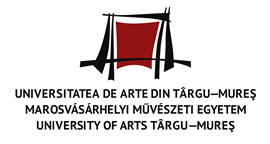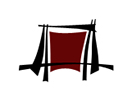VANISHING POINT IN THEATRE
International Conference of Theatre Studies, 17th edition CALL FOR PAPERS
Our conference will consider the two main meanings of the vanishing point: the compositional principle known from the process of creation/reception of the work of art, that is, the structure centred around a privileged point, as well as the critical reconsideration that, with the living body and in live performance, the vanishing point disappears in the act of materializing. Theatre as disappearance, as the deconstruction of the centre, as becoming is an experience highlighted in the 20th century, coterminously with the acknowledgment of theatre’s ephemeral character, and it has been activated by the increasing importance of the body as a medium, of dance theatre, and the challenge of the various (parallel) levels of reality and augmented spaces. All these medial phenomena subvert the spatial structure inherited from calssical theatre, the psychological models in scenic and textual dramaturgy, the fully centred identity, the methods of theatre historiography, and raise the question of the relations of traditional and alternative theatre forms. The investigation will lead to essential and complex questions: in which ways will interrelations with the electronic media (and the perspectives created by them) alter the structures of classical theatre media? Are the processes of embodiment and performativity able to transcode the central composition of director’s theatre (Regietheater), the logocentric authorial vision and the position of the spectator? Is it possible to maintain a loose cooperation of the rhizomatic, coordonating structures with the central-hierarchical structures in the new theatrical forms? Is there any need for centred models in the acting process when the artist bypasses Stanislavski’s methods and views them as mere alternative techniques? We propose the following themes to be investigated: - in the historical-analytical discourse: the inheritage of the European centred theatrical structures, the dominance or avoidance of centered power structures, present modifications of the articulations and aesthetics of directorial theatre; classical visual structures in contemporary theatre; non-European theatre and central perspectives - transcending the body, its reality and virtuality; performativity and the centre; the vanishing point in dance theatre - logocentric constructions in the process of creation; group creation, constructions and networks of relations in the creative process, methods of devised theatre; narrative structures and decentralization - languages of forms: dismantling the Cartesian perspectivalism in theatre; re-organizing the vanishing point in visual dramaturgy and in the forms of interactive, participatory theatre, multicultural, political theatre; the cases of cultural and social performance, their aesthetic approach; repetition and remake - safe dramatic structures and rhapsodic constructions; new relational techniques - acting techniques: the idea of the permanent centre, fragmentation and variation, role creation in coordination and/or subordination - scenic configurations and perspective, augmented space structures, human–nonhuman relations - the position of the spectator and the vanishing certainty Our conference aims to bring together academics, researchers and PhD students. Proposed abstracts (maximum 400 words) in English or French, as well as institutional affiliation of the author will be sent by email (Microsoft Word compatible document) to Sorin Crisan (si_crisan@yahoo.com) and Ildikó Ungvári Z. (iungvariz@gmail.com) prior to October 10, 2016. The working languages of the conference are English and French. For the papers with the topic closely related to language and concerning features of the Romanian or the Hungarian culture, we offer the possibility of organizing separate sections in the two languages. The scientific committee of the conference will select the participating papers before October 20, 2016. The papers will be published in Symbolon (the University’s theatre studies periodical).


